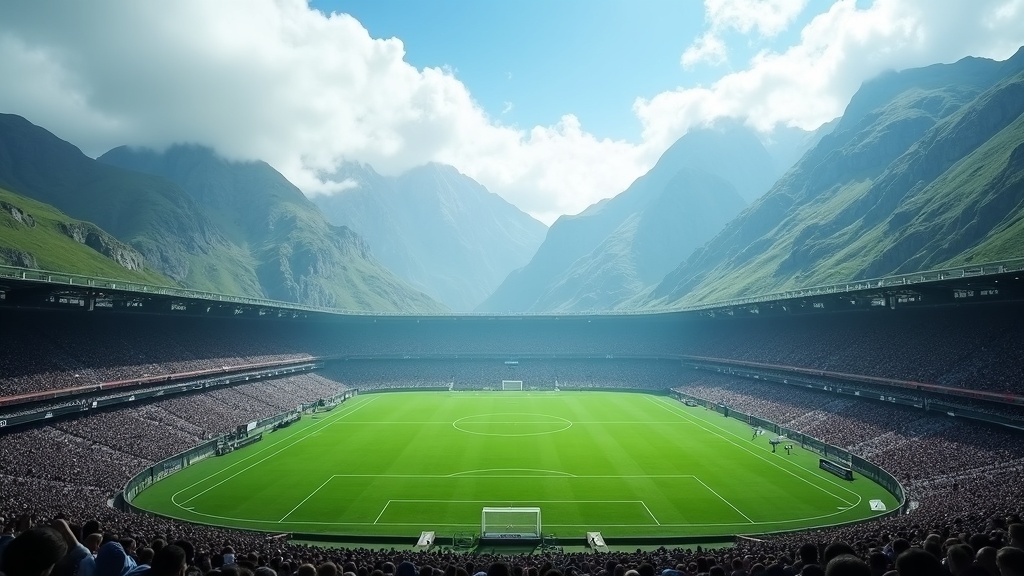If you’ve ever watched a soccer match played in a mountain city like La Paz or Denver, you probably noticed players looking a bit winded, or maybe the pace seemed a little slower than usual. That’s totally normal, and it has everything to do with altitude. Changes in altitude can affect how soccer players perform in ways that can surprise both athletes and fans. I’m breaking down how playing up high (or traveling there) actually changes the game, what coaches and players do about it, and what all this means if you care about soccer’s tactics and results.

Why Does Altitude Impact Soccer Performance?
At its core, altitude affects how much oxygen is in the air. The higher you go, the thinner the air gets, which means each breath delivers less oxygen to the bloodstream than it would at sea level. Since soccer is a runningheavy sport, with players covering up to 10-12 kilometers per match, less oxygen can be a real challenge. Simply put, maintaining your energy levels, recovering between sprints, and keeping up with the match’s pace gets harder. CHECK OUT : DO YOU WANT TO LEARN HOW TO DO BUSINESS ONLINE
Players often describe a burning feeling in their lungs, headaches, and overall fatigue when they play at high elevation, especially if they haven’t had time to adjust. These aren’t just complaints; the science backs it up. Studies in sports physiology show lower oxygen availability can lower endurance, slow reaction times, and even affect accuracy when passing or shooting.
Key Ways High Altitude Changes The Game
Altitude doesn’t just make players more tired; it brings in other twists too. Here’s what tends to stand out when the stadium climbs into the clouds:
- Reduced Stamina: Soccer demands both aerobic (long, steady running) and anaerobic (quick bursts) effort. At high altitude, stamina drops off faster, especially for teams used to sea level.
- Ball Behavior: The air is thinner up high, so the soccer ball actually moves faster and travels further. Long passes, crosses, and even shots on goal zip through the air more easily, which can throw off players if they’re not used to it.
- Player Recovery: Even during breaks or halftime, full recovery takes longer. Players will often feel like they’re never quite catching their breath, and substitutions may become more common.
- Risk of Illness: Some athletes experience Acute Mountain Sickness, causing headaches, dizziness, and nausea. It’s definitely not what you want during a big match.
How Teams Prepare for Altitude Matches
Adjustment is possible, but it takes time and some clever planning. Here’s how pros and even amateur teams approach matches at altitude:
- Arrive Early (or Late): Teams often choose to arrive days in advance (sometimes up to two weeks) to get used to the conditions. The body can partially adapt by making more red blood cells, which helps carry more oxygen. Some teams, though, arrive just hours before kickoff, trying to avoid the peak window where altitude sickness really takes hold.
- Hydration and Nutrition: Drinking lots of fluids becomes super important because the air is dryer and dehydration sneaks up more easily. Some teams tweak diets to include more iron and complex carbs to boost the body’s ability to manage less oxygen.
- Altering Game Strategy: Coaches might tell players to pace themselves differently, maybe play a bit less aggressively early on or save sprints for key moments. Substitutions and rotating fresh legs in become a bigger part of the strategy.
Real-World Examples
One of the best-known high-altitude stadiums is Estadio Hernando Siles in La Paz, Bolivia, about 3,600 meters above sea level. International teams, especially from countries at sea level, often struggle there. The Bolivian national team has pulled off some surprising wins against much higherranked nations at home, mostly because visitors have to work twice as hard to keep up.
Denver’s Empower Field, which sits around 1,600 meters, altitude still high enough to make a difference, also gives local soccer and football teams a small but real advantage. Data shows visiting teams average fewer goals and more mistakes compared to locals who are used to the thin air.
Clubs from Mexico City, Quito, and other mountainous regions in South America have similar stories. Their home matches often feature unique styles, such as shorter, quick passes rather than long balls, and a patient buildup, since both teams feel the burn of thin air. This sometimes results in surprising upsets, especially during World Cup qualifiers.
Challenges and Solutions for Players and Coaches
- Monitoring Fatigue: Wearable tech, like heart rate monitors and GPS trackers, lets coaching staff watch for signs players are struggling and signal when a substitution could help avoid injuries or mistakes.
- Gradual Adaptation: Some clubs plan training camps at altitude early in the season, not just before matches, hoping to carry some adaptation benefits through to later games.
- Medical Support: Teams sometimes travel with extra medical staff, oxygen tanks, and medications that help prevent or treat altitude issues.
- Mindset and Motivation: Coaches often spend more time preparing the mental side, reminding players that even if they feel tired, their opponents do too, and smart play can swing the advantage their way.
Reduced Stamina
Most people first notice the impact of altitude when they just can’t seem to run as easily or as long. During a match, it usually shows up as slower pressing, more breaks in running, and one on one battles that quickly get decided because players tire out. Coaches may swap in more midfield substitutions or encourage defenders not to venture too far up the field unless it’s worth it.
Ball Flight and Control
When the air is thin, the ball takes off differently. Set pieces like free kicks and corners can become unpredictable. Players who aren’t used to it may overhit passes and long shots. In practice, teams will usually get a feel for the conditions by arriving a day early and spending time with set pieces. Goalkeepers also need a little time to adjust, as fastflying balls can be tougher to judge.
Recovery and Health
Between sprints and at halftime, players often use oxygen masks or extra fluids to try to recover as much as possible. Small adjustments, like lighter warmups or quick massage therapy, may help prevent muscle cramps and reduce the risk of a player crashing during the second half.
Advanced Tips for Coping with Altitude in Soccer
Even if you aren’t a pro, managing altitude is totally possible with some smart tweaks. Here’s what works well both for teams and solo players:
- Gradual Training: Build up fitness by doing interval training or playing smallsided games to simulate hard efforts followed by recovery.
- Focus on Technique: Since power fades faster, sharp footwork and smart positioning become even more important than usual.
- Adapt Mental Game: Staying positive and prepared for discomfort goes a long way, so building confidence and focus before the match makes a real difference.
- Gear Up: Lightweight clothing, proper hydration gear, and energy snacks for the bench are pretty handy in tough environments.
Altitude and Its Impact Beyond the Players
It’s not just the athletes who notice altitude. Coaches, referees, and even fans can feel a little off at high elevation. For fans, it can just be a little dizziness or needing more water, but coaches and officials need to stay sharp for decisions that can affect the match. Being aware of these changes helps everyone involved to come better prepared.
- Home Turf Advantage: Teams used to the conditions often win more home games than away matches, especially if the difference in elevation is big.
- Travel Planning: Some clubs add extra rest days or custom training plans to handle upcoming highaltitude fixtures.
Frequently Asked Questions
People ask about altitude and soccer all the time. These questions come up the most:
Question: How long does it take to get used to high altitude for a soccer match?
Answer: For most players, a week or two at high elevation gets the body somewhat adapted. Shorter stays help a bit, but full adjustment takes a lot longer.
Question: Is there any way to train for altitude at home?
Answer: Some teams use altitude tents or masks that simulate thinner air, but the full benefits aren’t quite the same as physically being at elevation.
Question: Are there leagues or matches regularly played at high altitude?
Answer: Yes, teams in places like Bolivia, Ecuador, and parts of Mexico have home fields above 2,000 meters. Matches there regularly see effects on pace, style, and results.
How Altitude Shapes Modern Soccer Tactics
Today, high altitude isn’t just a background detail. Teams plan yearround for fixtures at elevation, track fitness changes, and use data from wearables to make real time decisions during matches. Home teams know when to push the pace and when to let opponents run themselves ragged. Every small adjustment, whether it’s arriving early, managing hydration, or switching tactics, can pay off with better performance and those allimportant points on the table.
Altitude shakes up what we expect from a soccer match, favoring quick adaptation and smart planning. Whether you’re a coach, a player, or just a fan who loves the game, knowing how the environment changes things helps you appreciate the sport from a totally new perspective.

